Native American group wants NFL 'Redskins' team name back
Native American Guardians Association's Billy Dieckman argues ‘Redskins’ is not offensive amid a push to bring back the team name.
The Native Americans who are leading a viral petition demanding the Washington Commanders reclaim their historic Redskins name bristled with anger and resolve after a team representative called their organization "a fake group."
"We’re not a fake group. We’re tribal-enrolled members from tribes across the United States," Eunice Davidson, co-founder and president of the nonprofit Native American Guardians Association (NAGA), headquartered in North Dakota, told Fox News Digital during an interview.
Davidson calls herself "full-blooded Dakota Sioux."
NATIVE AMERICAN GROUP CALLS ON COMMANDERS TO RENAME TEAM REDSKINS: ‘CANNOT ERASE HISTORY’
NAGA generated nationwide headlines this summer with its petition to bring the Redskins back to the NFL.
The effort now has some 128,000 signatures as of Monday (August 28).

Members of the Native American Guardians Association. NAGA historian Andre Billeaudeaux (back row, center) blames "toxic ignorance" for the effort to remove Native imagery from sports and popular culture. President Eunice Davidson (far right) said the pressure is fueled by "racist White woke" professors and academics. (Courtesy Native American Guardians Association)
"We’re in it to win it," said NAGA co-founder and historian Andre Billeaudeaux.
"You understand the people that started this petition is a fake group, right?" Matthew Laux, a premium-seat sales manager for the Commanders and FedEx Field, wrote on August 18 in a text to a former luxury-suite season ticket holder.
"We’re not a fake group. We’re tribal-enrolled members from tribes across the United States."
"This name change WAS, IS & forever will be a major problem," Christina King had texted earlier in the day, sparking what became a heated exchange between the two.
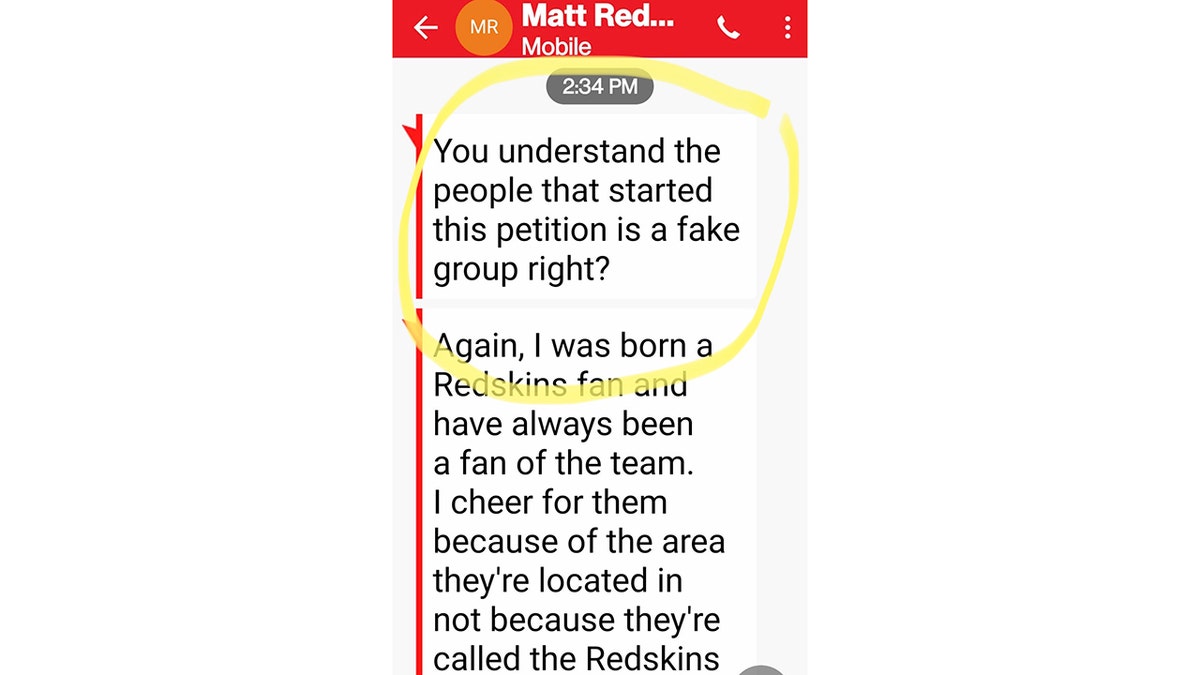
A Washington Commanders/FedEx Field representative called the Native American Guardians Association "a fake group" in a text exchange with former luxury-box owner Christina King. (Screenshot by Christina King)
The franchise adopted the name Boston Redskins in 1933, before moving to Washington, D.C. in 1937.
King said she gave up her suite after three years when the franchise, under previous owner Dan Snyder, dropped "Redskins" as the team's nickname in 2020.
"As a fan of the team I didn't want it [the Redskins name] changed either," Laux said at one point during the text exchange.
He appeared to grow increasingly frustrated as King dug in her heels in defense of the traditional Redskins name and in support of the petition, before he called NAGA "a fake group."
NFL FANS TAKE JABS AT COMMANDERS OWNER JOSH HARRIS OVER AWKWARD HANDSHAKE WITH JOE BUCK
Fox News Digital reached Laux, but he declined to talk.
A Commanders spokesperson told Fox News Digital that Laux does not speak for the organization.
The Commanders also told Fox News Digital via an emailed statement from a spokesperson, "For nearly 90 years, this franchise had a different name, and many have fond memories of cheering for that team and watching it win three Super Bowls. This does not signify any shift in our approach nor does it change the valid reasons for dropping the name."

A Washington Redskins helmet sits on the grass during a preseason football game between the Redskins and Cleveland Browns at FedEx Field on Aug. 18, 2014, in Landover, Maryland. The Redskins logo was originally inspired by King Tammany, a Lenni Lenape chief known to the men who fought the American Revolution as "the Patron Saint of America." (TJ Root/Getty Images)
Former suite owner King texted to Laux during their conversation, "We just signed the petition from NAGA … We will come back as suite owners when the name reverts back to the Washington Redskins."
"We’re in it to win it." — NAGA co-founder and historian Andre Billeaudeaux
"The team never should have never been pressured into changing the name," she also said.
Davidson of NAGA claimed the pressure to remove the Redskins from the NFL, as well as Native American imagery from high school, college and pro sports around the country, is led by "racist White woke" college professors and academics.
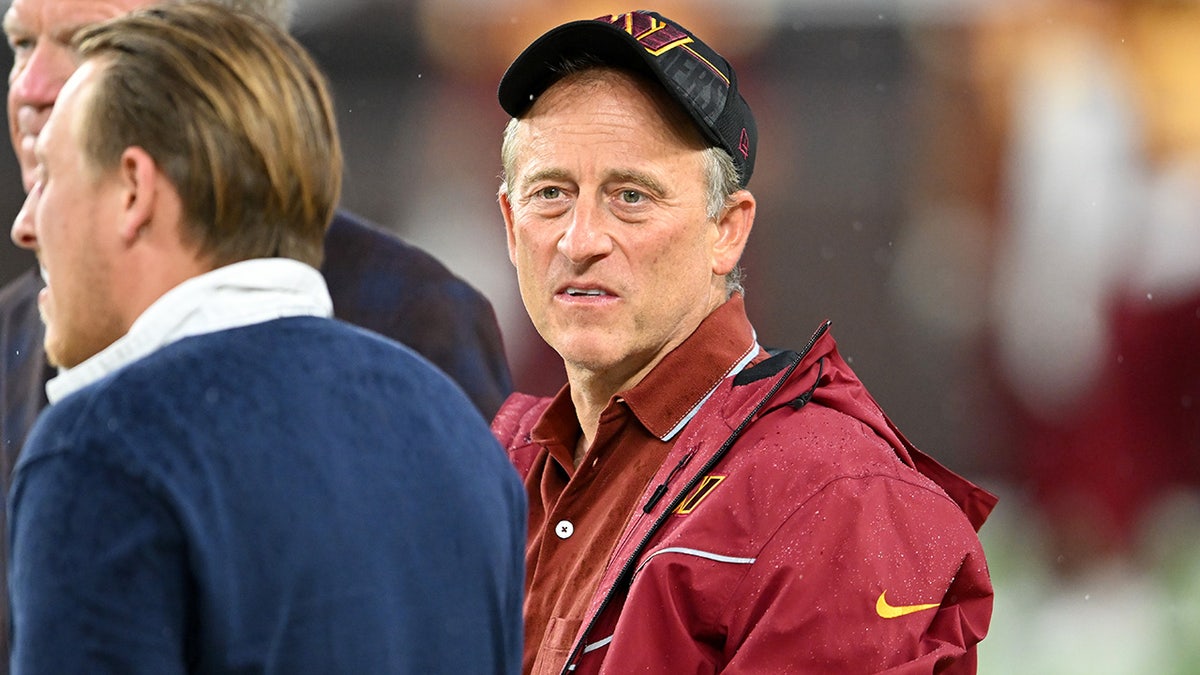
Managing partner Josh Harris of the Washington Commanders looks on prior to a preseason game against the Cleveland Browns at Cleveland Browns Stadium on Aug. 11, 2023, in Cleveland, Ohio. (Nick Cammett/Diamond Images via Getty Images)
"People want to call us fake and they’ve done that before," Davidson said. "They never tell our story and that’s their goal. To wipe out Native history. It’s discrimination when you go after one culture like this."
"Toxic ignorance" has fueled the effort by woke professors and academics to erase Native American history from the nation’s sports and pop-culture lexicon, said Billeaudeaux, who is the author of the book "How the Redskins Got Their Name."
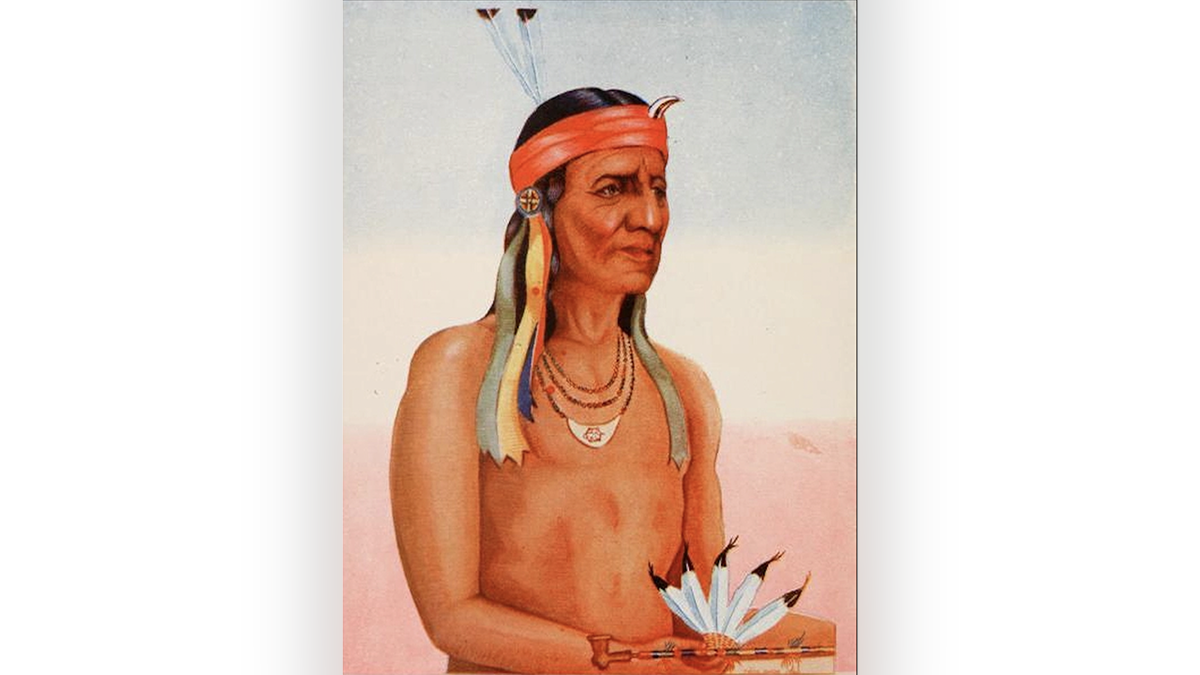
Lenni Lenape chief Tammany, also known as Tammany, was dubbed the "Patron Saint of America." Idealized composite portrait by Fritz Bade from descriptions of the man, as it appears in the 1938 book, "The Tammany Legend" by Joseph White Norwood. Tammany was the inspiration for the original Redskins logo. (Fritz Bade/Public Domain)
"These people are just ignorant. It’s toxic ignorance," said Billeaudeaux. "It’s group think. It’s the psychology of a group that has no idea what they're doing, but they won’t listen to us, either."
The original Redskins name and logo was inspired by 17th-century Lenni Lenape chief Tamanend, also known as Tammany.
The Tammany-inspired logo appeared on Braves uniforms as the franchise moved to Milwaukee and Atlanta.
He was celebrated by the Founding Fathers and the troops that fought in the American Revolution as the "Patron Saint of America."
The "men spent the day in mirth and jollity ... in honor of King Tammany," an aide to George Washington wrote after the deadly winter at Valley Forge in May 1778.

The 42nd New York Volunteer Infantry Regiment was commonly known as The Tammany Regiment, in honor of the Lenni Lenape native who helped inspire the birth of the new nation. Tammany's image adorns the 42nd New York's battlefield monument at Gettysburg. (Library of Congress/Public Domain)
Statues of "Saint Tammany" stand sentinel at the U.S. Naval Academy and watch over the dead of New York’s 42nd Volunteer Infantry Regiment, known the Tammany Regiment, on the Gettysburg battlefield.
The celebrated Lenni Lenape-inspired patriotic Tammany Societies sprung up around the nation in the early days of independence.
NATIVE AMERICAN GROUP TOUTS ‘OVERWHELMING’ SUPPORT TO RETURN REDSKINS NAME TO NFL
Tammany made his way into professional sports when James Gaffney, a member of New York City’s powerful Tammany Hall, purchased the Boston Rustlers of Major League Baseball's National League in 1912.
He rebranded the team the Boston Braves in honor of Saint Tammany and introduced the image of the chief as its logo.
The Tammany-inspired logo appeared on Braves uniforms as the franchise moved to Milwaukee and Atlanta.
The "Patron Saint of America" was erased from Atlanta Braves uniforms in 1989.

Babe Ruth of the Boston Braves signs autographs for fans on April 23, 1935. The Boston Braves were founded by James Gaffney, a member of Tammany Hall, who adopted the image of Lenni Lenape chief King Tammany as the team logo — as seen on Ruth's left sleeve here. (Getty Images)
Businessman George Preston Marshall brought the NFL to Boston in 1932. As was the custom of the era, he named the upstart pro football club after the more established pro baseball team.
Marshall's Boston Football Braves played at Braves Field and adopted the same Tammany logo as the Baseball Braves.
The following year, Marshall moved the team to nearby Fenway Park, home of the American League Boston Red Sox.
He renamed the team Redskins. It was a tribute not only to the Red Sox — but was deeply embedded in cherished Native American lore.
"Redskins is not about race. It's a warrior who's gone through the bloodroot ceremony," said Billeaudeaux, the Native American historian.
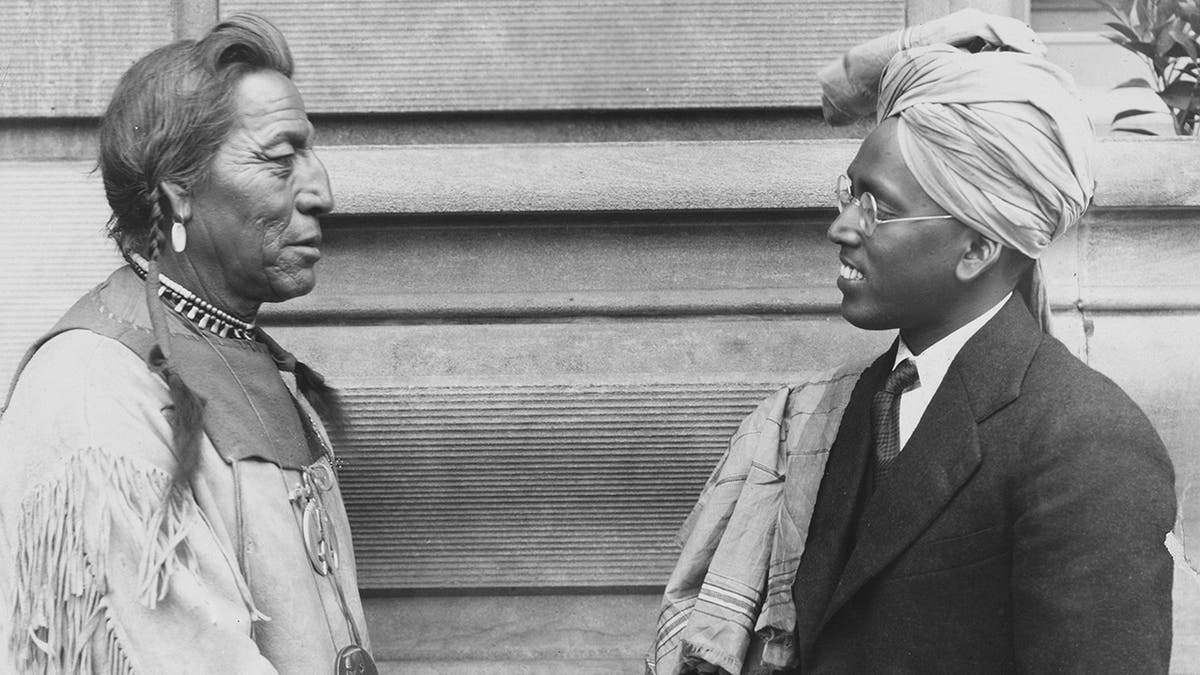
At left, Native America Blackfeet Chief John Two Guns White Calf (1872-1934) is shown shaking hands with A. Aaron of Madras, India, as they met at a Rotary Convention, circa 1925. White Calf was the inspiration for the face that appeared on Washington Redskins helmets and merchandise from 1972 to 2000. (FPG/Archive Photos/Hulton Archive/Getty Images)
"They shave their heads and surrender their souls to their Creator. They paint themselves red as if they were born new into the world."
Marshall moved the Redskins to Washington, D.C. in 1937. He died in 1969.
The team freshened its original Tammany-inspired logo in 1971. The new version was designed by Blackfeet Native Walter "Blackie" Wetzel and was intended to represent Blackfeet Chief John Two Guns White Calf.
The new logo enjoyed overwhelming approval from Native American groups across the country when the Redskins stepped on the field wearing the redesigned uniforms in 1972.
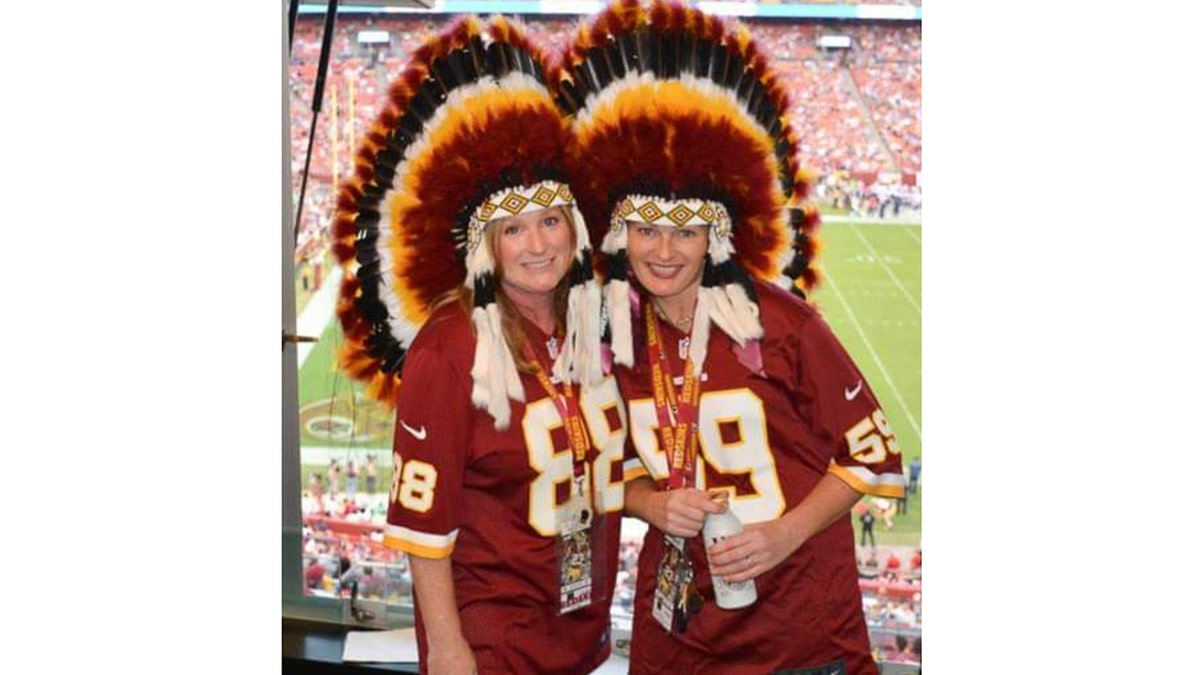
Washington Redskins fan Christina King, left, and sister Carolyn Steppe. King owned a suite at FedEx Field for Redskins games for three years, she said. She gave up the suite when the team dropped the Redskins name in 2020. (Courtesy Christina King)
"The Redskins were the only minority representation in the entire NFL and it was a real person, not a mascot," said Billeaudeaux.
The Redskins name and its imagery remain popular among both longtime fans of the NFL team and Native Americans — representing a public relations nightmare for the new ownership.
The Facebook group "Redskins Fans Forever" includes 61,600 members who refer to the team only by its historic name.
Ninety percent of Native Americans around the country supported the Redskins name in a Washington Post poll in 2016, as the woke assault on the traditional name grew stronger.
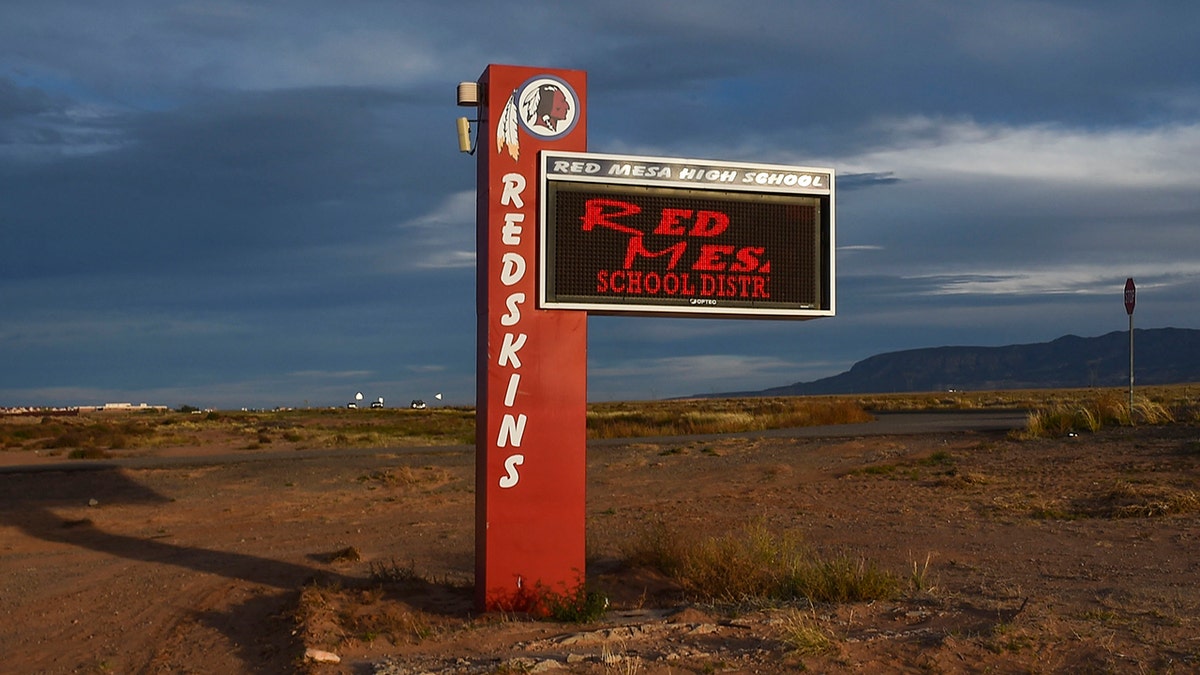
The digital display sign bearing the Redskins logo is seen outside Red Mesa High School on Oct. 15, 2014, in Red Mesa, Arizona. The Red Mesa Redskins installed a new football field in 2023 with Redskins warrior splashed across the 50-yard line. (Ricky Carioti/The Washington Post via Getty Images)
Native American groups still support the Redskins name and image today, even after it was wiped from the NFL, said NAGA president Davidson.
The Red Mesa High School Redskins, on a Navajo reservation in Arizona, celebrated the unveiling of their new football field just last week.
CLICK HERE TO SIGN UP FOR OUR LIFESTYLE NEWSLETTER
The field features the menacing image of a red-skinned Native warrior splashed across the 50-yard line.
"We’re Redskins fans, not Commanders fans," King, the former suite owner, told Fox News Digital. "We’re not coming back until the name comes back. They’ve taken these images from sports. They bowed to the woke and they’re trying to erase Native American history."
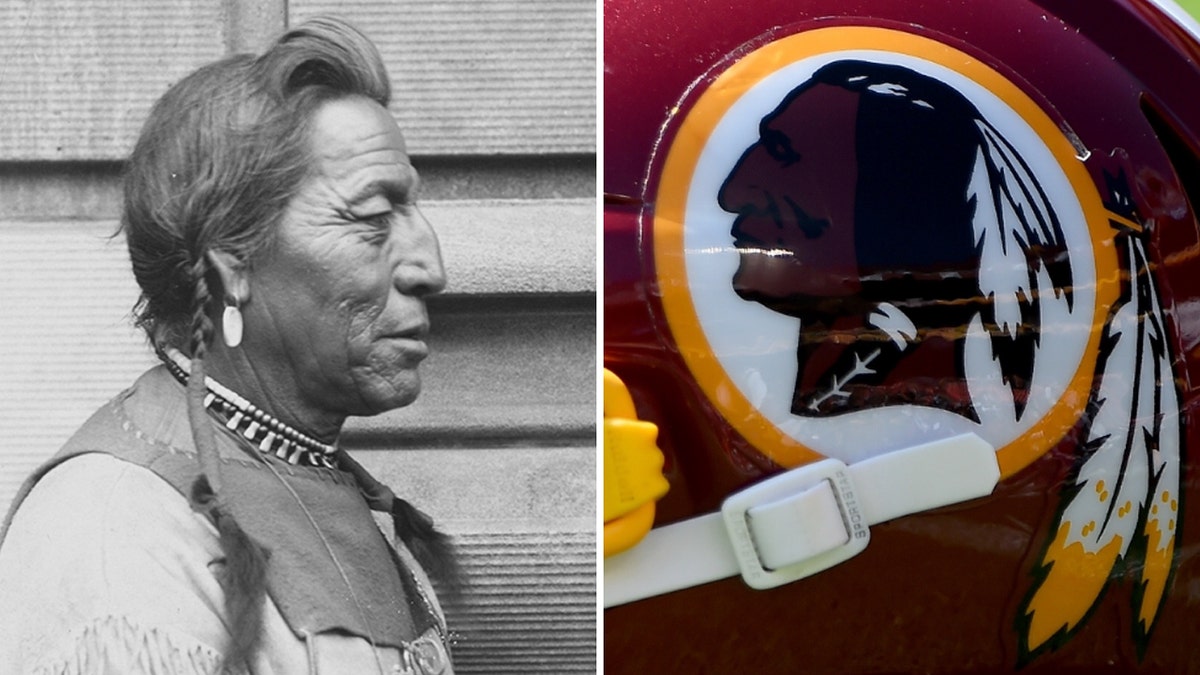
Blackfeet Chief John Two Guns White Calf (left) was the inspiration for the face that appeared on Washington Redskins helmets and merchandise from 1972 to 2000. A Washington Redskins helmet photo is on right. (FPG/Archive Photos/Hulton Archive and Will Newton, both from Getty Images)
Said Billeaudeaux about the issue, "The name Redskins is a national treasure."
CLICK HERE TO GET THE FOX NEWS APP
He added, "And for that reason it should be protected. It’s a cultural treasure and deserves to be protected and understood. It’s not just about the football team. It’s about the DNA of the nation."





















